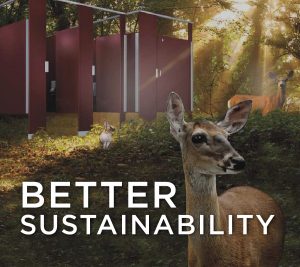We live in an era where sustainability is one of the most important practices with businesses. Millions of companies around the world have gone paperless. Several buildings are being designed with sustainable practices and materials, and natural and sustainable energy are making a huge impact on businesses around the world. The threat of climate change has enacted entrepreneurs and innovators to explore greener alternatives, and with the green movement and sustainability are on the rise, they aren’t going away anytime soon. 
Businesses that make sustainability more than just a practice have seen their efforts pay off with their profits. Your business can make efforts to implement a sustainability plan that will not only help the green movement, but will help grow your business.
The Importance of Sustainable Practices
No matter what type of business you’re in, you can always take steps to make it more sustainable. Whether it’s implementing a thorough recycling program, replacing your light fixtures with LEDs, using green building materials, or even going solar, these sustainable practices are only meant to reduce harmful emissions into the atmosphere, but lower the costs of unnecessary expenditures. By taking these steps to make your business align with the green and sustainability movement, you’ll be able to do your part, lower your costs, and even inspire others.
How Sustainability Can Boost Your Profits
There are several ways where sustainability pays off. It helps reduce your energy costs when you go solar or install LED light fixtures. There are various programs out there that offer incentives to companies that recycle properly. Basically, going green and using sustainable technology will help lower your overhead costs.
Sustainability can also improve your actual profits. Whether you’re in a direct-to-consumer or a business-to-business industry, customers and clients love to see business that they partner with on the upward trend. Being a sustainable business can actually attract customers and clients with a similar mindset towards the green movement.
Getting Started on Becoming Sustainable

When you’re looking to improve your sustainability with your current facility, there are a few things you can go to lower your energy costs and help reduce any emissions. While recycling is important, it’s an on-going practice. You’ll want to set things in place now, so they can begin to pay off.
The first step is choosing lower-energy lightbulbs and motion sensors, so the lights can automatically shut off when they’re not needed. If you’ve got it in the budget, consider installing solar panels, which will show a huge decrease on your energy expenses. You’ll also want to incorporate some green building materials in your facility. Consider replacing your toilet partitions and vanities in your restrooms with HDPE, a durable, recyclable, and sustainable building material. By implementing a plan of sustainability, you’ll see your facility and energy costs go down and your profits rise.
Want to learn more about how to become more sustainable? Check out this eBook, Sustainable Building Products: How to Make Your Facility Eco-Friendly from Top to Bottom, from your friends at Scranton Products.

 still steps that can be taken to increase the sustainability of your facility. A major area that you can focus on is your facility’s restrooms. More importantly, replacing your standard partitions with a
still steps that can be taken to increase the sustainability of your facility. A major area that you can focus on is your facility’s restrooms. More importantly, replacing your standard partitions with a